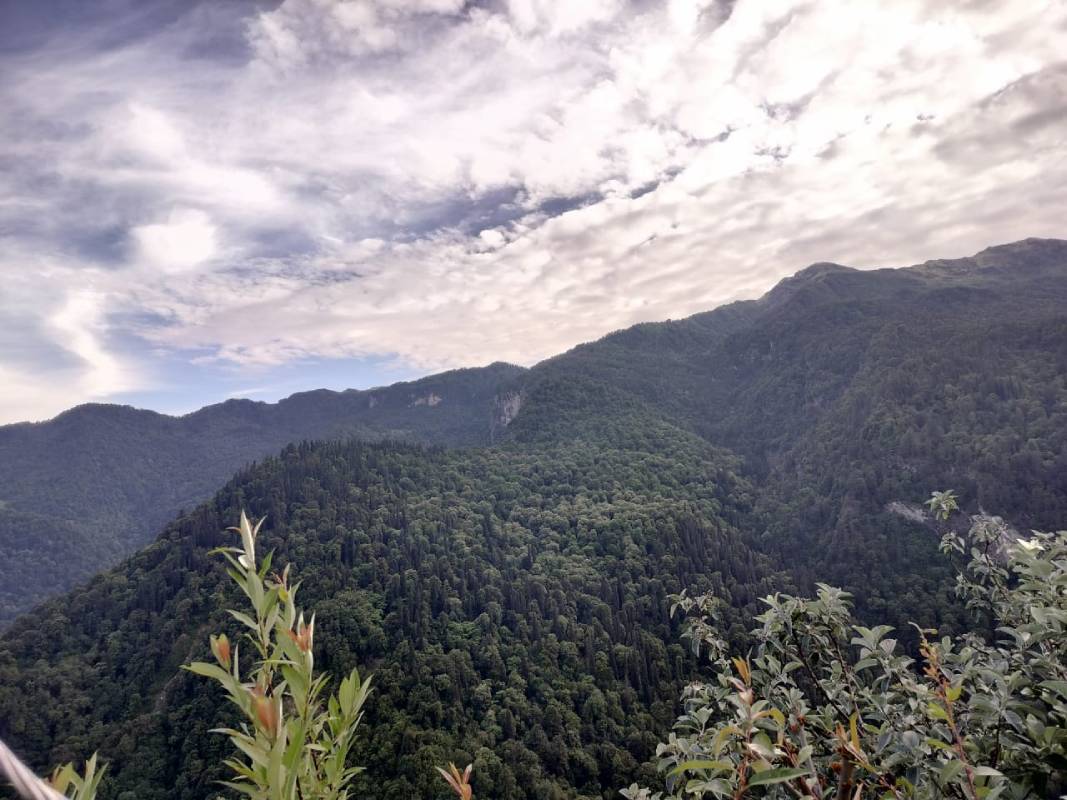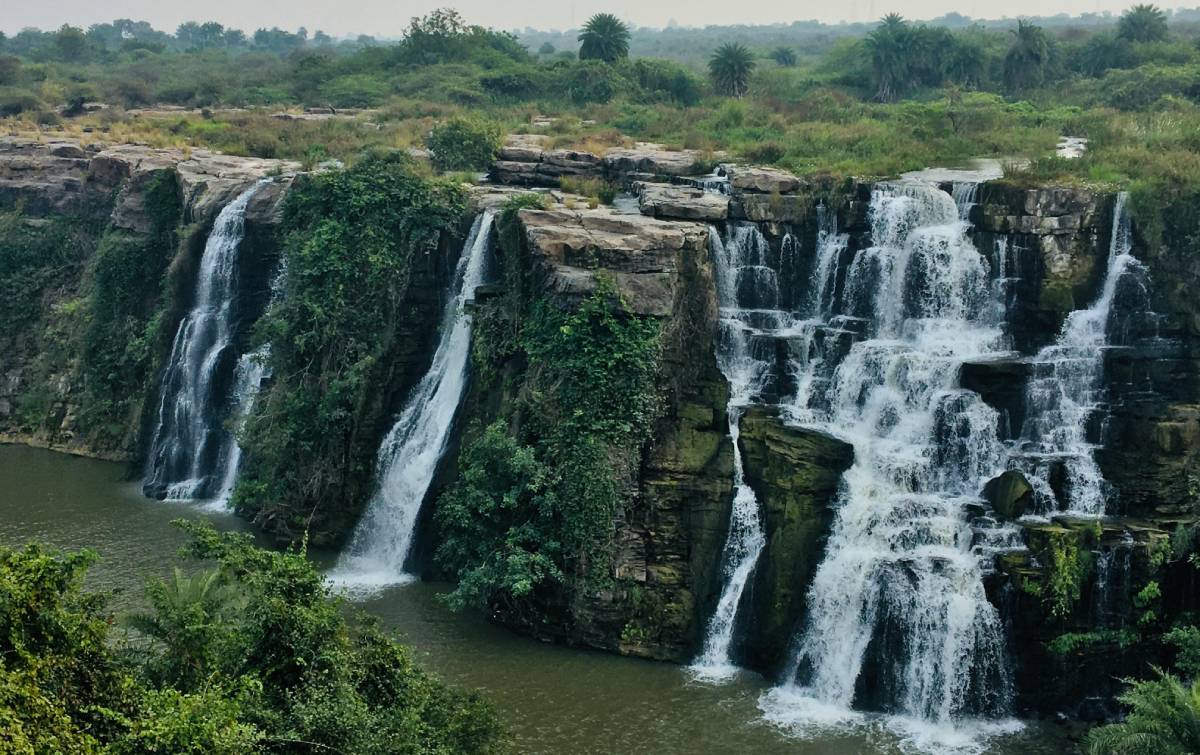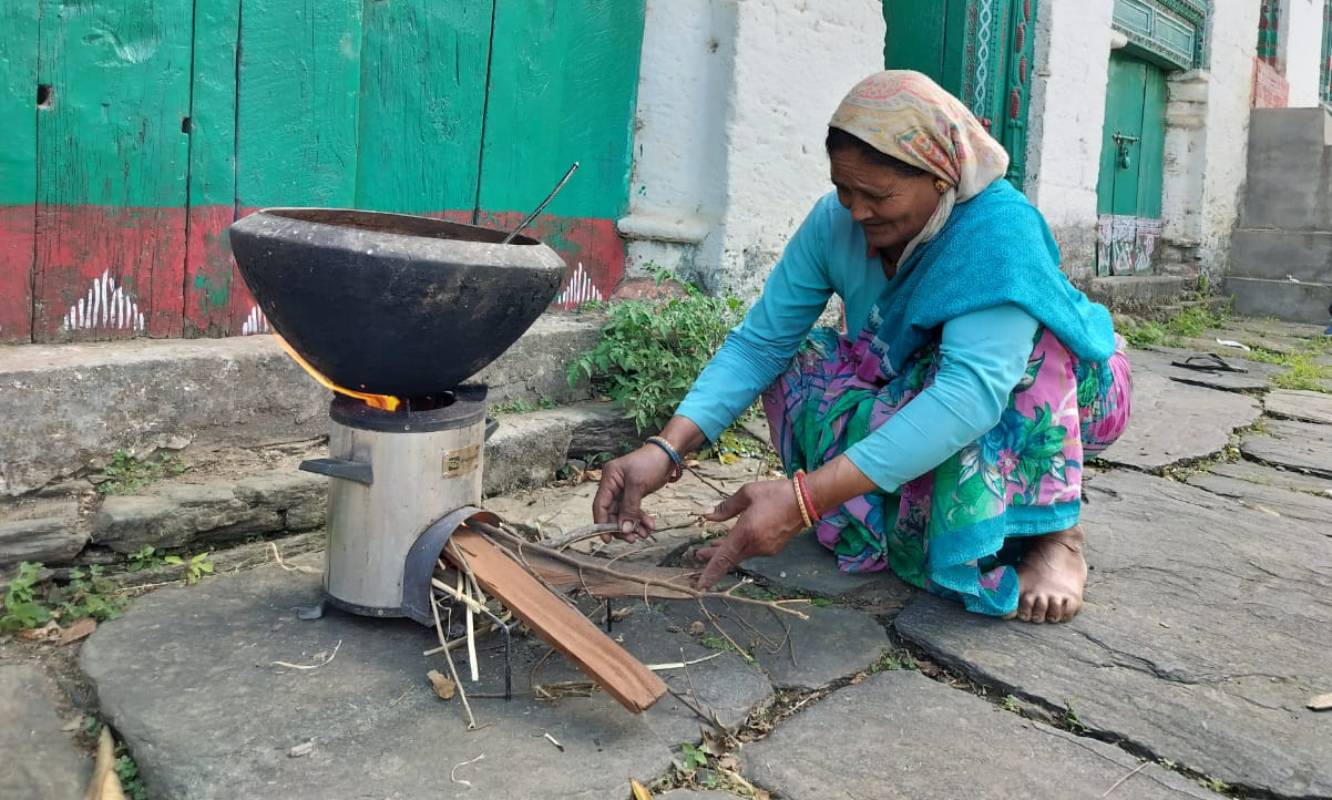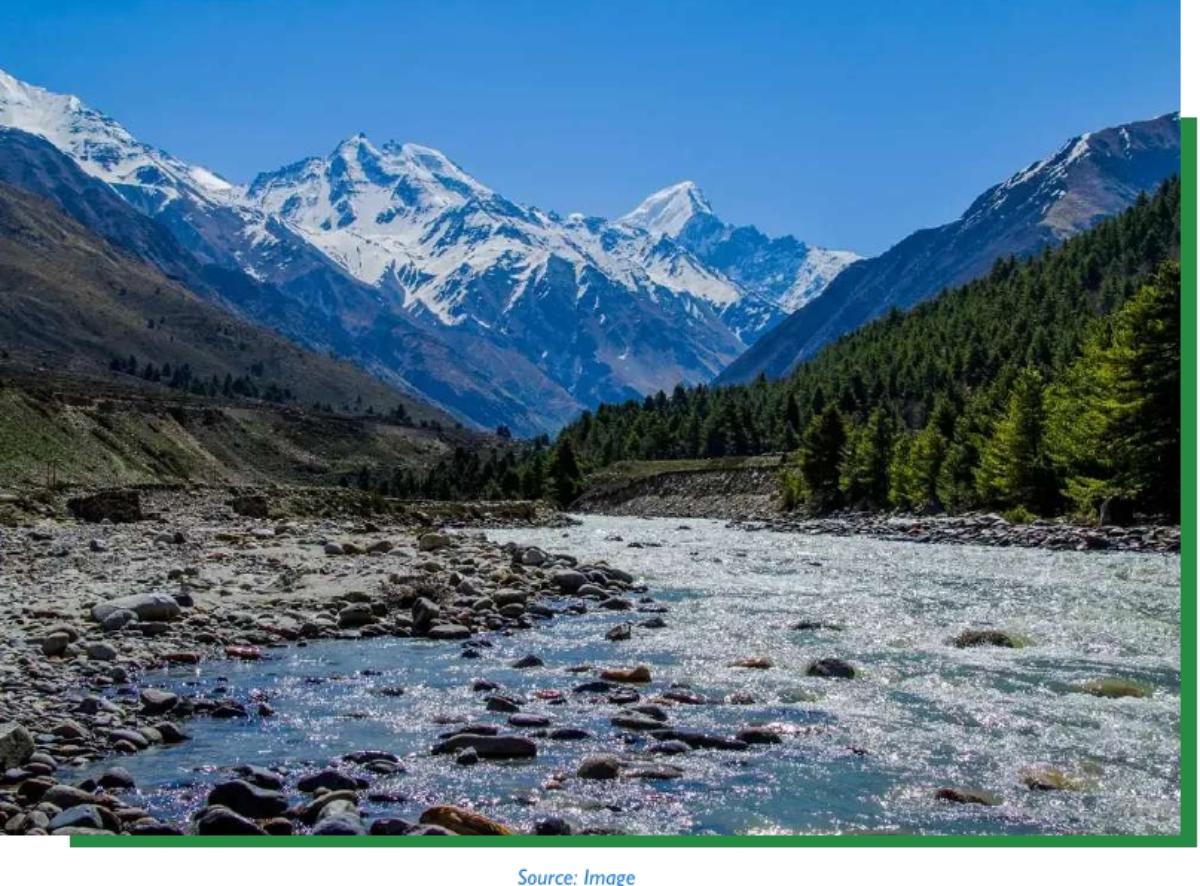Uttarakhand is an important state in the western Himalaya that has enormous natural wealth in the form of water, forest and land. These natural capitals are crucial for the sustainability of the Himalaya and life and livelihoods of its people. The total geographical area of the state is 55,483 sq km, out of which more than 68% (i-e 38,000 sq km.) area is under forest cover. Of the total landmass of the state, 14% area is under agriculture, most of which is concentrated in tarai and bhabhar region of Uttarakhand. The state is also very rich in water resources, which receives about 48,352 MCM water annually through precipitation. Moreover, it has a network of more than 213 rivers and 14,000 glaciers.
The ecological services provided by the enormous natural wealth located in the state directly benefits more than 1 billion people of the state and many more in the Gangetic plain. All of these natural capitals are under crisis due to excessive anthropogenic pressure and climate change. This chapter very briefly highlights the state of various natural resources of the state and articulates major challenges faced by them.
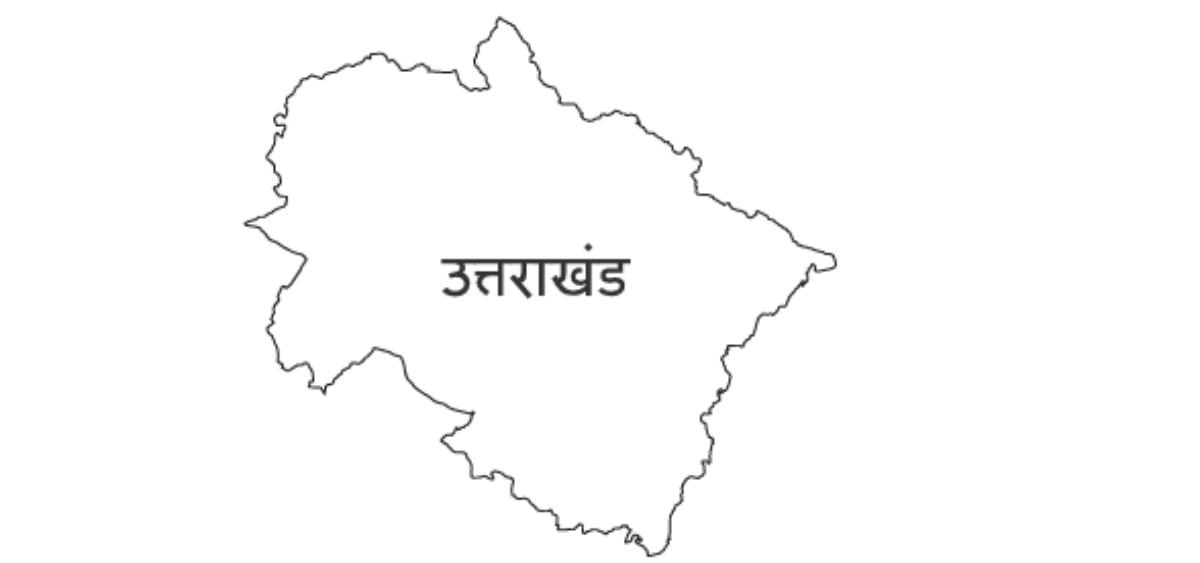
Jal- State of Water Resources in Uttarakhand:
Uttarakhand has huge networks of rivers, large number of glaciers, vast area under snow cover and long rainy seasons both during monsoon and winter making it a water surplus state. The annual precipitation provides about 48,352 MCM water to the state, other sources such as glaciers, snow, water inflow from other countries and groundwater aquifers further increases the water availability in the state. According to an NMCG survey there are five major river basins namely Alaknanda, Bhagirathi, Sharda, Ramganga and Yamuna. These major river basins cover entire geography of the state with the network of 213 small and medium size perennial rivers and streams[1].
The average annual rainfall in Uttarakhand is 1700 mm, however it varies from district to district. According to a report of NGWB, average rainy days in summer and winters are 120 and 60 respectively. The south west monsoon adequately showers the state including heavy rainfall in mountains. Due to steep slopes, the runoff is very high in mountainous districts of the state. However, good quality oak forests in the mountains are crucial in slowing down runoff, soil erosion and recharging local springs and water sources.
Major Water Statistics of Uttarakhand
| Number of major river catchments | Number | 04 |
| Number of Rivers | Number | 213 |
| Watersheds | Number | 8 |
| Sub-watersheds | Number | 116 |
| Micro-watersheds | Number | 1110 |
| Average annual Rainfall | MM | 1700 |
| Precipitation (including Snowfall): (MCM) | MCM | 48351.82 |
| No of Glaciers | Number | 14000(5.3% of TGA) |
| Number of glacial lakes | Number | 1353 |
| Number of Permanent snowfields | Per cent | 10% of TGA |
Source: compiled from different Govt sources
All rivers in the state are perennial, fed by glaciers. However, a large amount of water sourced by these rivers is from underground seepage accumulated by rich forest diversity in the state. The geohydrology of the state is largely divided in two categories namely Gangetic Alluvial Plain and the Himalayan Mountain Belt.
The gangetic alluvial plain is in the south most portion of the state which is the part of Indo-Gangetic Foreland basin. The large part of the state geography is part of the Himalayan Mountain Belt, which is further sub-categorized in four zones. The south most sub-zone adjacent to the Gangetic alluvial plain is called Sub-Himalaya or Outer Himalaya which is at the elevation of 250 to 800 m above mean sea level. Doon valley is part of the outer Himalaya. Moving northwards the second zone is Lesser Himalaya that covers areas such as Almora, Baijnath and Askot. Central Himalaya and Tethys Himalaya are top two geo hydrological zones of Uttarakhand[2].
Water Challenges in Uttarakhand
The abundance of water resources in the state was re-planned about two decades ago to utilize it for local social and economic development. This plan was executed under the traditional development model that believes in generating wealth through mega projects. Many hydro power projects were initiated in the last two and half decades in the state to tap the hydro power generation potential of its hundreds of rivers. Uttarakhand government has estimated that its rivers have potential to generate 24,551 Mega Watt electricity per year. Apart from already functional hydro power projects, 87 more projects are in different stages of construction in the state. This over emphasis on hydro power projects has grossly undermined aquatic biodiversity, river life of rivers and social & economic dependence of locals on rivers and other water resources. Effectively, the hydro power generation has overshadowed all other social, economic and environmental usage of water in the state.
Apart from hydro power generation, water demand for agriculture and domestic use is significant. However both these sectors are facing challenges to meet existing demand. Nearly 5.4 lakh hectare agriculture land has potential for irrigation in the state which constitutes about 34% of the total land under agriculture in Uttarakhand. However, the irrigation department of Uttarakhand has developed irrigation capacity for only 4.48 lakh hectare, despite having enough water in the state. Similarly, in rural areas, state government is able to supply only 529 MLD as against demand of 663 MLD of drinking water[3]. Similar gaps also exist in demand and supply for drinking water in urban areas.
Water streams and local water sources such as Naula, Dhara and Gadhera are important sources of water for domestic purposes and livestock use. These water sources supply more than half of total rural water demand. In mountain districts these sources are very high. In some districts like Chamoli, Rudraprayag, Pithoragarh and Uttarkashi these water resources supplies 100% of water required for domestic use[4]. However, these water streams and sources are gradually drying-up due to deforestation, changing characteristics of the local ecosystem and habitation extension. The Central Ground Water Board has also observed that water level in streams monitored by it are immensely fluctuating[5].
Climate Change is yet another major factor affecting the water resource of the state. Various studies have observed that glaciers are receding at a very high rate, the tree line is moving upward changing the ecosystem of Himalayan alpine and permanently snow covered area. With increase in temperature, incidents such as Glacial Lake Outburst Floods (GLOFs) are very common[6]. The Kedarnath flood in 2012 and Vinshnupryag flood in 2021 are two recent devastating GLOFs the state witnessed.
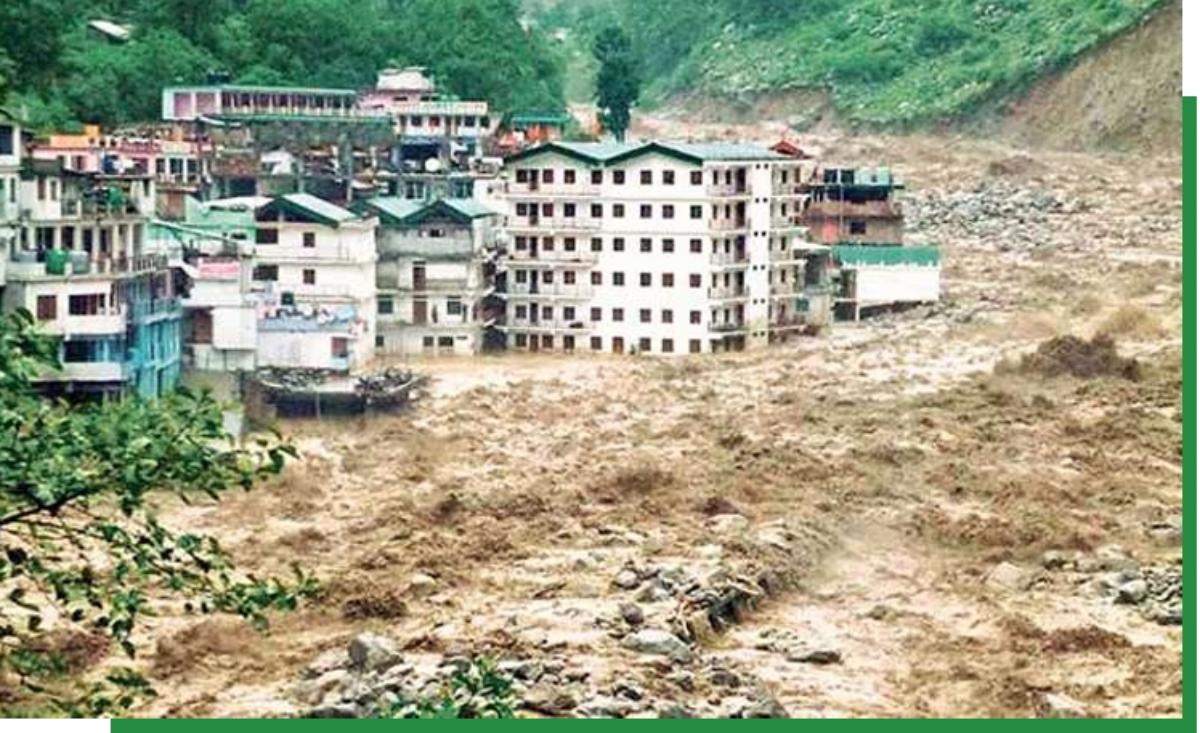
Uttarakhand, despite being a water rich state, has a very uneven distribution of water for various uses. The overemphasis of the state on hydro power generation has grossly undermined sectors such as drinking water, irrigation, river fishing and other recreational activities. Our water infrastructures are not capable of meeting water demand for irrigation and domestic use. Over and above, all major water sources in the state such as rivers, glaciers and streams are threatened by climate change and unregulated development.
Jangal- State of Forests in Uttarakhand
Forests in Uttarakhand are integral part of subsistence living, moreover, from the early twentieth century the then British government started developing it as a key revenue source for the government. The colonial government developed a profit making business around forest resources such as timber, wood for railway track and resins. To promote this forest based business and industry, the then government promoted plantation of economically beneficial tree species such as chir pine, teak, sheesham and eucalyptus. These economic activities continued even after independence in 1947. However, more recently more activities have been added to broaden forest based revenue of the state government. These activities include collection and trade of herbs and likens. Moreover, the government has earned a lot by diverting forest land for non forest purposes after commencement of the Forest Conservation Act, 1980.
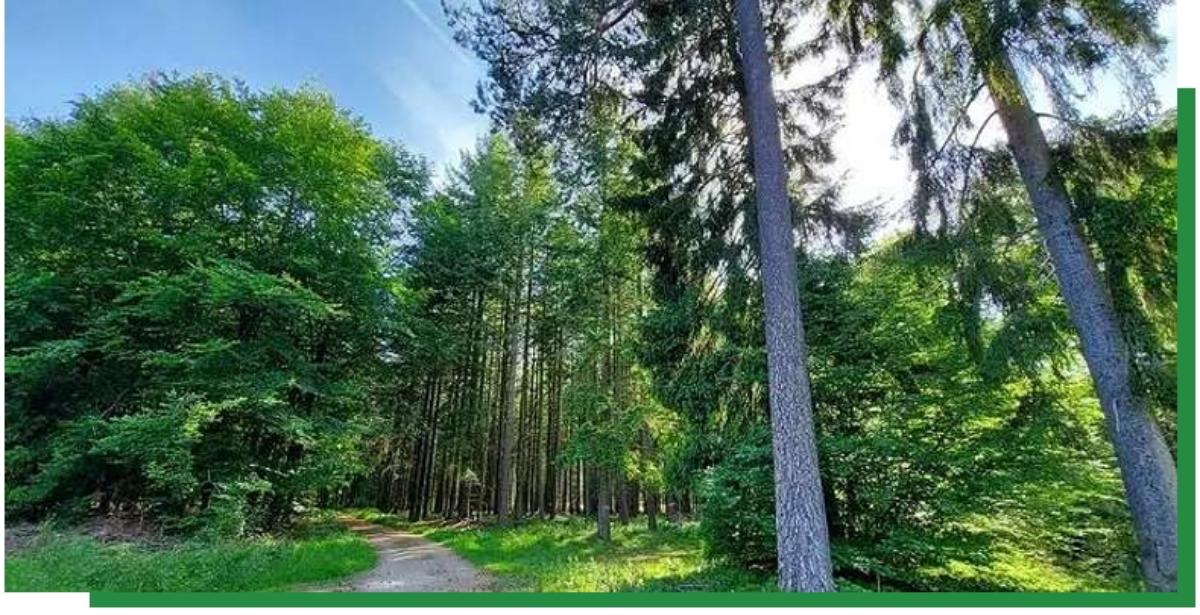
The commercialization of forest land and its products have grossly changed the local ecosystem and characteristics of forests. Forests at the elevation from 700 msl and above are in two broad categories namely Subtropical Pine Forests (mixed forests) and Himalayan Moist Temperate Forests (oak forests) these two categories of forest are backbone of mountain life and livelihood as they provide fuel, fodder, grazing, water and other MFP to villagers. These forests account for nearly 39% of the total forest area. The chir pine found in the Tropical Dry Deciduous Forest which was promoted and planted initially by the British government and continued after independence accounts for more than 15% of the total forest land.
Drastic Changes in Ecosystem of Forests
Chir pine has proved to be a dominating species in the mountains and created existential threats to local oak and mixed forests in Uttarakhand. Gandhian activists late Smt. Mira Mahen in 1952 raised the issue of invasive characteristics of chir pine and wrote to the then Prime Minister Mr. Jawahar Lal Nehru. She argued that the promotion of chir pine has not only deteriorated the local ecosystem but also led to social fragmentation[7]. These trends are continuing as a recent study observed that from 1991 to 2001 in the region of Almora and Nainital 18.2% dense oak forest converted into chir forest. Similarly, 7.4% dense oak forest degraded to chir forest from 2001 to 2017 in the same region[8].
Species wise forest classification in Uttarakhand
| Species | Area | % to TFA |
| Sal, Teak, Sissoo, Eucalyptus | 375585.89 | 14.51 |
| Oak | 383088.12 | 14.8 |
| Mixed | 614748.59 | 23.77 |
| Chir Pine | 394383.84 | 15.25 |
| Other (Deodar, Blue Pine, Fir, Spruce, Sypress) | 132762.13 | 5.44 |
| Waste Land/ Empty land | 685749.43 | 26.52 |
| Total | 2586318 | 100.29 |
Uttarakhand Forest Statistics (2014-15) ,GoUK
The changing characteristic of forests in Uttarakhand is a serious concern as it has disrupted the subsistence living in all mountain districts of Uttarakhand. Moreover, chir forest has also changed the regulation of ecosystem services such as water. Chir forests are dryer compared to oak forests. Expansion of chir forest is making the region dryer and contributing in drying of mountain water streams. These forests are more prone to forest fires in the state.
Mis-governance of Forests and its Resources:
The change in forest ecosystems and their characteristics is very much dependent on forest governance. In Uttarakhand the state forest department has administrative control over only 64% of the total forest area. A substantial area under forest i-e 19% is under the control of Van Panchayats. These Van Panchayats are community based institutions responsible for protection and conservation of forests and equitable distribution of forest resources. The incentive of these Van Panchayats is in oak and mixed forest which provides fuel, fodder and grazing to local communities.
Forest Administration in Uttarakhand
| Administrative Control | Area (in sq. km.) |
| Forest under administration of the State Forest Department | 24,418.67 |
| Forest under administration of Van Panchayats | 7,210.19 |
| Forests under administration of the State Revenue Department | 4,768.7 |
| Forests under other agencies | 157.51 |
| Non classified forests | 1,444.51 |
| Total | 37,999.58 |
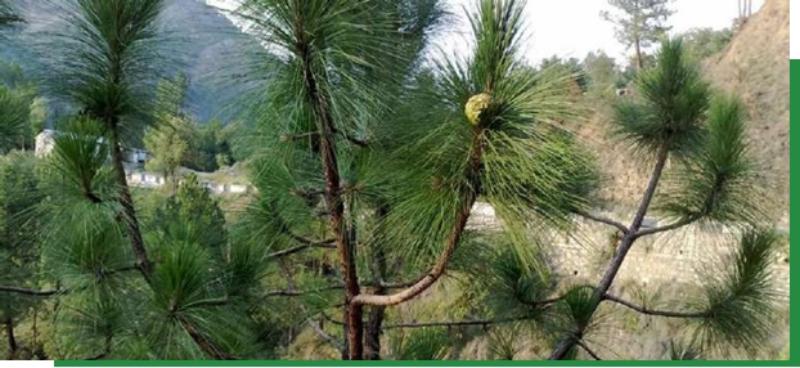
Uttarakhand Forest Statistics (2014-15) ,GoUK
According to forest statistics published by the state government both mixed and oak forest are in much better condition compared to chir pine forest in the state. More than 72% of these two category forests are either very dense or moderately dense. On the other hand Chir pine forest which is largely governed by the state forest department and where communities have no incentives has less than 60% area either in dense and moderately dense forests.
Unaccounted Forests
According to ISFR the total forest land in the state is 38,000 sq km which accounts for 68.48% of the total landmass of Uttarakhand. However, as per the same survey report the recorded forest in the state is only 16,785 sq km. The forest or green cover outside recorded forest is 7,520 sq km. Of the total recorded forest in Uttarakhand, the Forest Survey of India has no data for 21,215 sq km (55.8%).
| S.no. | Forest Status | Area (in sq km) |
| 1 | Total Geographical Area of Uttarakhand | 55,483 |
| 2 | Total Recorded Forest | 38,000 |
| 3 | Actual Forest Cover in Recorded Forests | 16,785 |
| 4 | Actual Forest cover in Forest outside Recorded Forests | 7,520 |
| 5 | Un Accounted Forests (missing forests) (2-3) | 21,215 |
Source: ISFR, 2021
A lot of this forest land is empty and waste land such as snow covered areas, glaciers, mountains, water bodies and pasture land. According to the state forest department the total waste/empty forest land is 6,857 sq km[9]. Yet a very large forest land is still unaccounted for in records of the state forest department and Forest Survey of India. In absence of data, its vegetation and wildlife a large portion of the forest land still remain unplanned.
Degradation of Forests
The state of forest survey reports published by the Forest Survey of India has been keeping records of Uttarakhand forest from 2001 after formation of the state in 2000. The data shows that the total forest area including forest outside recorded forest has marginally increased by 1.5% from 2001 to 2021. However, the quality of forest has degraded significantly in these two decades. In these two decades, the state has lost 1200 sq km dense and moderately dense forests. Probably most of these forests degraded to open forest with canopy density less than 40%, the forest land in this category having increased by 1567 sq km during the period.
Quality of Forest in Uttarakhand
| Year | Total Forests | Dense Forest (Canopy Density more than 40%) | Open Forest (Canopy density between 10 to 40%) |
| (area in sq km) | |||
| 2001 | 23,938 | 19,023 | 4,915 |
| 2011 | 24,496 | 18,929 | 5,567 |
| 2021 | 24,304 | 17,823 | 6,482 |
Compiled from various ISFR
Uttarakhand government as a trustee of its rich forest cover has been advocating for financial incentives from the government of India. However, its forests are facing two major challenges. One, the density of its forests is continuously deteriorating; two, the ecological characteristics of its mountain forests are changing due to the invasive nature of pine trees and climate change. In the last two decades, despite heavily regulated forests, a significant landmass has converted from dense forest to open forests. On the other hand continuous upward movement of pine forest is replacing mixed and oak forests in the mountain district. The invasive nature of the pine tree and decreased forest governance role of local communities has led this change unchecked. These challenges together have further intensified problems relating to soil erosion, surface runoff, shortage of fuel & fodders, forest fires, drying of water streams, upward movement of tree line occupying alpine rangelands and wildlife habitat. To address these challenges, we need quality data; however, the government has no data for its more than 55% forest land.
Jameen: Sate of Land in Uttarakhand
Nearly 70% of the total geographical area of the state is under forests and about 29% of the state is culturable and cultivable land. However the net area under agriculture is about 14% of the total geographical area of the state. On this small land size nearly 70% of the population is dependent for their livelihoods.
The land distribution is uneven in the state that gives ownership of maximum agricultural land to very few owners. Nearly 70% of the land owners in the state hold land less than 1 hectare. These 70% farmers share only 27% of the total agricultural land in the state. However 22% of the total agricultural land is possessed by just 3% land owners in the state[10].
The very small land holding and fragmented land holding makes agriculture an expensive enterprise especially in hilly districts of Uttarakhand. The labour intensity in hilly agriculture is much higher compared to agriculture in bhabar and tarai regions of the state. Moreover, decreasing productivity due to loss of soil nutrient, climate change and destruction by wild animals such as monkeys and beer makes agriculture even more vulnerable in the state. According to statistics of the State Migration Commission in 2019, the major reasons for distress migration in Uttarakhand are livelihoods (50%), poor education and health (15%) and loss in agriculture (10%).
Classification of Land of Uttarakhand (,000 Hectare)
| Year | Land Not available for Cultivation | Other Uncultivated Land Excluding Fallow Land | Total Fallow Land | Net Area Sown | Cropped Area | Area Sown more than once | ||
| Area under Non Agricultural Uses | Barren and Un culturable Land | Total | ||||||
| 2000-01 | 152.2 | 310.244 | 462.4 | 866.7 | 107.4 | 769.9 | 1222.3 | 452.3 |
| 2010-11 | 217.6 | 224.764 | 442.4 | 894.4 | 127.7 | 723.1 | 1169.6 | 446.5 |
| 2020-21 | 188.3 | 249.278 | 437.6 | 940.5 | 191.0 | 620.6 | 996.8 | 376.1 |
Compiled from various Agricultural Statistics at a Glance Report: https://desagri.gov.in/
Marginal farmers which accounts to about 70% of the total land owners are increasingly finding it difficult to continue agriculture in the state. Data related to land use in the first two decades further confirm this statement. The fallow land has almost doubled from 1.7 ha in 2000-01 to 191 ha in 2020-21. Consequently, the net sown area and total cropped area has also decreased significantly in their period. Farmer’s ability to draw more than one crop has also decreased significantly in these two decades.
Land Utilization and Agricultural Production
Wheat and Rice have taken over a variety of millets as the main crop of Uttarakhand over the decades. More than 60% agricultural land in the state is under food grains such as wheat and rice. A sizable land is under vegetable cultivation. However, compared to its neighbouring states Himachal Pradesh and Jammu & Kashmir, land under horticulture in Uttarakhand is much less.
Area under principal crops in Uttarakhand (in thousand hectares)
| Year | Millets | Pulses | Food Grains | Fruits | Vegetable |
| 2004-05 | 293 | 45 | 1038 | 201 | 72 |
| 2009-10 | 271 | 64 | 1009 | 193 | 82 |
| 2014-15 | 222 | 67 | 897 | 205 | 100 |
| 2019-20 | 182 | 60 | 805 | 181 | 99 |
| 2022-23 | 158 | 63 | 757 | 181 | 100 |
Other than horticulture, the area under every crop has decreased in the last two decades in Uttarakhand. Area under millet cultivation has observed sharpest decline of about 46%, which has decreased from 293 thousand hectare in 2004-05 to 158 thousand hectare in 2022-23. Area under food grains has also decreased from 10.38 lakh hectare to 7.57 lakh hectare (27%).
The land for agriculture in Uttarakhand is very limited. Moreover, the land distribution is skewed in favour of large farmers, who are just 3% of the total farmer population in the state. The impact of climate change, decreasing soil nutrient, attack of wildlife, fragmented land holding and insignificant average land holding are some reasons which have made farming an expensive, labour intensive and loss making livelihoods.
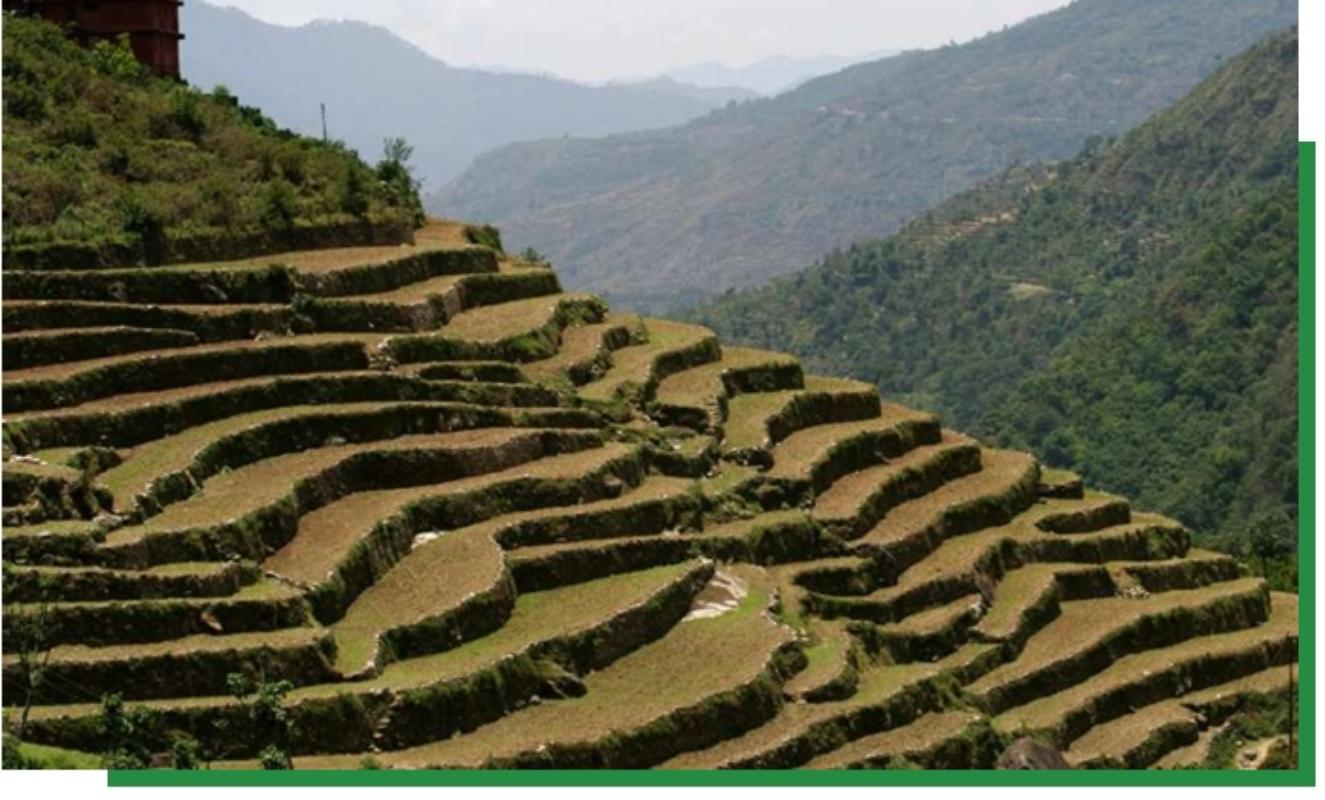
State of Soil in Uttarakhand
Uttarakhand is divided into four different agro climatic zones formed with different types of soil and therefore create a range of geological and hydrological formation across the state. The first agro-climatic zone, which comprises areas of Tarai, Bhabat and parts of Champawat, Dehradun and Nainital district is formed of alluvial soil. These regions are favourable for cultivation of rice, wheat, sugarcane, mango, litchi and guava.
The second agro climatic zone is at the altitude between 1000 to 1500 msl and is formed of sandy loam soil. This zone is also called mid hill south zone and is favourable for cultivation of rice, wheat and finger millets. This zone is north of the Tarai and Bhabar region of Uttarakhand and comprises parts of Dehradun, Champawat, Nainital, Almora and Tehri district of the state.
Soil in the remaining two agro climatic zones of the state is red to dark and black clay. This climatic zone is at the altitude of 1500 msl and above. All hilly districts of the state have these two agro-climatic zones. These two zones are favourable for cultivation of many local millets Amaranth and finger millet and fruits like apple and pears.
Agro-climatic zone of Uttarakhand
| Zone | Farming situation | Soil | Districts | Principal farm produces and Livestock |
| Zone A
up to 1000 M |
Tarai irrigated | Alluvial | U.S. Nagar, Haridwar | Rice, wheat, sugarcane, lentil, chickpea, rapeseed mustard, mango, Litchi, guava, peach and plums. Livestock: Buffalo and cattle |
| Bhabar
Irrigated |
Alluvial mixed with boulders and shingles | Nainital, Dehradun and Pauri Garhwal | Rice, wheat, sugarcane, rapeseed mustard, potato, lentil, mango, guava and litchi. Livestock: Buffalo and cattle | |
| Irrigated lower hills (600-1000M) | Alluvial sandy soil | Champawat, Pauri Garhwal, Dehradun, Nainital, Tehri Garhwal | Rice, Wheat, onion, chilly, peas, potato, radish, cauliflower, pulses, oilseeds, soybean, mango, guava, plums and peaches.
Livestock: Buffalo and cattle |
|
| Rain-fed lower hills (600-1000M) | Residual sandy loam | Champawat, Nainital, Pauri Garhwal, Dehradun, Tehri Garhwal, Bageshwar | finger millet, Maize, rice, wheat, pulses, mango, guava, plums and peaches.
Livestock: Buffalo, cattle and goat |
|
| Zone B
1000-1500M |
Mid hills south aspect (1000-1500 M) | Sandy loam | Champawat, Nainital, Almora, Dehradun, Tehri Garhwal, Bageshwar | Rice, finger millet, wheat, potato, tomato, peas, cole crops, pulses, peach and plums.
Livestock: Cattle, sheep & goat |
| Zone C
1500-2400M |
High hills
(1500-2400 M) |
Red to dark | Pithoragarh, Almora, Chamoli, Bageshwar | Amaranth, finger millet, French-beans, Cole crops, potato, peas, peaches, plums, pear, apple and stone fruits.
Livestock: Cattle, sheep and goat |
| Zone D>
2400 M |
Very High hills | Red to dark Black clay | Pithoragarh, Chamoli and Uttarkashi | Amaranth, buckwheat, peas, Cole crops, apple and potato.
Livestock: Sheep & goat |
State Horticulture Mission, Uttarakhand: https://shm.uk.gov.in/pages/display/6-state-profile
Soil Nutrient and Fertilizers:
The decreasing soil nutrient in Uttarakhand is a big concern like in other parts of the country. It has further increased the cost of agricultural input such as fertilizers, pesticides and seeds. The tradition of local seed conservation has taken over the market leading to much unpredicted production. The use of chemical fertilizer has also increased drastically in the state in the last couple of decades. Per hectare use of chemical fertilizer in Uttarakhand is very high compared to other states in western Himalaya namely Himachal Pradesh and Jammu & Kashmir.
Fertilizer Consumption per Unit of Gross Cropped Area in Uttarakhand
| Year | Nitrogenous (N) (kg/ha) | Phosphatic (P) (kg/ha) | Potassic (K) (kg/ha) | Total (NPK) (kg/ha) |
| 2006-07 | 87.4 | 20.6 | 7.27 | 115.35 |
| 2009-10 | 115.4 | 29.6 | 10.26 | 155.3 |
| 2014-15 | 128.9 | 24.1 | 6.88 | 160.0 |
| 2019-20 | 123.8 | 30.73 | 8.81 | 163.4 |
Compiled from various Agricultural Statistics at a Glance Report: https://desagri.gov.in/
Fertilizers and other market solutions for mountain agriculture have helped in production and per unit yield in the last couple of decades. The yield of food grains has increased from 622 kg /hectare in 2004-05 to 958 kg per hectare in 2022-23. Similarly, yield enhancement was observed in millets and pulses as well[11]. Despite the growth in yield, many people have deserted their fields and abandoned agriculture due to many reasons discussed above including decreasing soil nutrients and increasing input cost.
The Government of Uttarakhand has pushed for organic production and natural farming through various schemes, projects and legislation. In 2019 the state government enacted legislation to regulate and promote organic farming and production. In 2023-24, Uttarakhand had 51,628 hectare land under organic certification. In this year, the state’s organic production was 44,745MT[12]. Compared to other states in the western Himalaya, Uttarakhand has moved ahead in terms of recognizing the crisis of soil nutrient and took steps to reclaim its soil.
Jalvayu- State of Climate in Uttarakhand
The temperature in Uttarakhand varies significantly from place to place due to sudden changes in elevation and diversity in locations, slopes and topography. The temperature in the state starts to rise from March and peaks in May and June.
Mean Maximum and Minimum Temperature in Summer and Winter
| Summer | Winter | |||
| Location | Mean max | Mean min | Mean max | Mean min |
| Southern Uttarakhand and Valleys | 340C-380 C | 200 C-240 C | 200 C | 60 C |
| Places >2000 m altitude | 230 C-240 C | 150 C | 100 C-120 C | 10C-30C |
Source: Compiled from India Meteorological Department, 2014, Climate of Uttarakhand https://www.imdpune.gov.in/library/public/Climate%20of%20Uttarakhand.pdf
Southern part of the state namely Bhabar and Tarai region are hotter compared to mid and high Himalayan regions. The summer mean maximum temperature of southern Uttarakhand and valleys is equivalent to summer mean maximum temperature of areas at the elevation above 2000 meter.
According to the state plan for climate change the temperature has been increasing in western Himalaya. According to the plan document, the net increase in regional temperature is in the range of 1.70 C to 2.20 C in 2030 with respect to 1970[13].
The annual average rainfall in Uttarakhand is about 1330 mm, however it varies from district to district. Almora receives minimum rainfall with an annual average of 966 mm and with annual rainfall average of 1775 mm Pithoragarh district receives maximum rain in the state. The precipitation is in the form of rainfall and snow. However, snowfall is limited to high altitude regions from December to February every month. Annual average rainy days in Uttarakhand are 63, which are highly concentrated in months of June, July, August and September. Rainy days in winters are also significant in the state (16%)[14].
The state plan for climate change has reported that the average rainfall is on the increase. According to their estimate the net increase in rainfall in 2030 will be 60mm to 206mm with respect to average annual rainfall in 1970. It further provides that the monsoon rainfall will increase by 12mm and winter rainfall will increase by 5 mm in 2030. Moreover, some areas of Uttarakhand will even see net rainfall increase of 50% with respect to average rainfall of 1970[15].
Impacts of Climate Change on Natural Wealth of Uttarakhand
Receding Glaciers: Uttarakhand has nearly 900 glaciers supplying water to hundreds of its perennial rivers and streams. Various studies shows that these glaciers are melting at alarming rate due to climate change and increase in global temperature[16]. According to the state plan for climate change Gangotari glacier is retreating at the rate of 19m per year. Other important glaciers such as Pindari, Milam, Dokriani, Chhanguch, Thelu and Raktavamaare also retreating at very high speed. Chhaguch glacier is retreating at the rate of 85 m/ year[17].
Increasing Incidents of GLOF: Glacial Lake Outburst Flood (GLOF) is increasingly becoming a major cause of disaster in the state. The Kedarnath flood in 2013 and Dhauli Ganga flood in February 2021 are two recent examples of devastating GLOFs. Both of these disasters were massive and took the lives of hundreds of people. Studies shows than due to climate change and increase in temperature in Himalaya, many glacial lakes are expanding which increases possibilities of their outburst[18].
Land Degradation and Desertification: According to the Desertification and Land Degradation Atlas of India, 6.48 lakh hectare land of Uttarakhand is under desertification and land degradation. This landmass is 12.12% of the total geographical area of Uttarakhand[19]. Degradation of vegetation is the most prominent factor responsible for land degradation and desertification in the state. According to the atlas, this factor is responsible for degradation of 11.37% of total geographical area in Uttarakhand. Of this, 2.7% degraded land is part of forests and 8.6% landmass is part of land with scrub.
Endangered Ecosystem: Successive FSI report on India’s State of Forest Reports reveals that the very dense forests are gradually declining despite the fact that total forest cover is increasing in the state. Moreover, the latest ISFR report of 2021 observes that the entire forest cover of the state will experience an increase in temperature more than 1.5 degree centigrade and more than 20% rain deficient/excess by 2030. If the situation persists the report further estimates that by 2085 the nearly 99.6% of the state’s forest will experience an increase in temperature by more than 5.1 degree centigrade and more than 38% rainfall departure[20]. These climatic changes are sufficient to completely change the ecosystem and local biodiversity.
References:
[1]National Mission for Clean Ganga: Uttarakhand River Atlas, August 2021: https://iwis.cganga.org/wp-content/uploads/2022/11/UK-River-Atlas-Report_Lowres.pdf
[2]Central Ground Water Board- Ground Water Year Book (2020-21), Uttarakhand: https://www.cgwb.gov.in/old_website/Regions/UR/Reports/Ground%20Water%20Year%20Book%202020-21%20Uttarakhand.pdf
[3]Irrigation Research Institute, Roorkee, State Specific Action Plan for Water Sector, 2018, Uttarakhad: https://nwm.gov.in/sites/default/files/Report_Draft-SSAP_Uttarakhand.pdf
[4] Irrigation Research Institute, Roorkee, State Specific Action Plan for Water Sector, 2018, Uttarakhad: https://nwm.gov.in/sites/default/files/Report_Draft-SSAP_Uttarakhand.pdf
[5] Central Ground Water Board- Ground Water Year Book (2020-21), Uttarakhand: https://www.cgwb.gov.in/old_website/Regions/UR/Reports/Ground%20Water%20Year%20Book%202020-21%20Uttarakhand.pdf
[6]Laurent Benjamin, Receding Glaciers Threaten Uttarakhand Residents’ Electricity and Homes, Earth Refugee, April 08, 2021: https://earthrefuge.org/receding-glaciers-threaten-uttarakhand-residents-electricity-and-homes/
[7] Guha Ramachandra, 2006, ‘How much should a person consume? Thinking through the environment’, Parmanent Black.
[8] Das Arundhati, Tarun Menon, J. Ratnam, R. Thadani, G. Rajashekar, R. Fararoda and G Shahabuddin, 2021, ’Expansion of pine into mid-elevation Himalayan oak forests: Patterns and drivers in a multiple use landscape, Forest Ecology and Management 497(2021)
[9] Govt. Of Uttarakhand- Uttarakhand Forest Statistics (2014-15), Forest Department, Uttarakhand: http://www.uafdc.in/acts&rules/forest_statistical_2014-15.pdf
[10] Govt. Of Uttarakhand, Uttarakhand State Perspective and Strategic Plan (2009-27), Watershed Management Directorate, Dehradun: http://wmduk.gov.in/Perspective_Plan_2009-2027.pdf
[11]RBI, Handbook of Statistics on Indian States (2022-23) , Reserve Bank of India; https://www.rbi.org.in/Scripts/AnnualPublications.aspx?head=Handbook%20of%20Statistics%20on%20Indian%20States
[12]Agricultural and Processed Food Products Export Development Authority (APEDA), Government of India: https://apeda.gov.in/apedawebsite/organic/data.htm
[13]Government of Uttarakhand- Uttarakhand Action Plan on Climate Change, 2014: https://forest.uk.gov.in/uploads/climate_change_information/1616764235.pdf
[14]India Meteorological Department, 2014, Climate of Uttarakhand: https://www.imdpune.gov.in/library/public/Climate%20of%20Uttarakhand.pdf
[15] Government of Uttarakhand- Uttarakhand Action Plan on Climate Change, 2014: https://forest.uk.gov.in/uploads/climate_change_information/1616764235.pdf
[16]Aksheev Thakur, Uttarakhand glaciers melting at larming pace, may trigger water scarcity, The Tribune, Oct 25, 2024: https://www.tribuneindia.com/news/uttarakhand/uttarakhand-glaciers-melting-at-alarming-pace-may-trigger-water-scarcity/
[17] Government of Uttarakhand- Uttarakhand Action Plan on Climate Change, 2014: https://forest.uk.gov.in/uploads/climate_change_information/1616764235.pdf
[18] Indian Institute of Remote Sensing (IIRS), RS for GLOF/LLOF Hazards: https://ndma.gov.in/sites/default/files/PDF/Sikkim_Conclave/Session%205/IIRS%20GLOF_Mapping_Modeling_2022_SDMA.pdf
[19] ISRO, Space Application Centre, Desertification and Land Degradation Atlas of India, 2016: https://www.sac.gov.in/SACSITE/Desertification_Atlas_2016_SAC_ISRO.pdf
[20] FSI, 2023, India Sate of Forest Report, Govt of India, https://fsi.nic.in/isfr-2021/chapter-11.pdf

